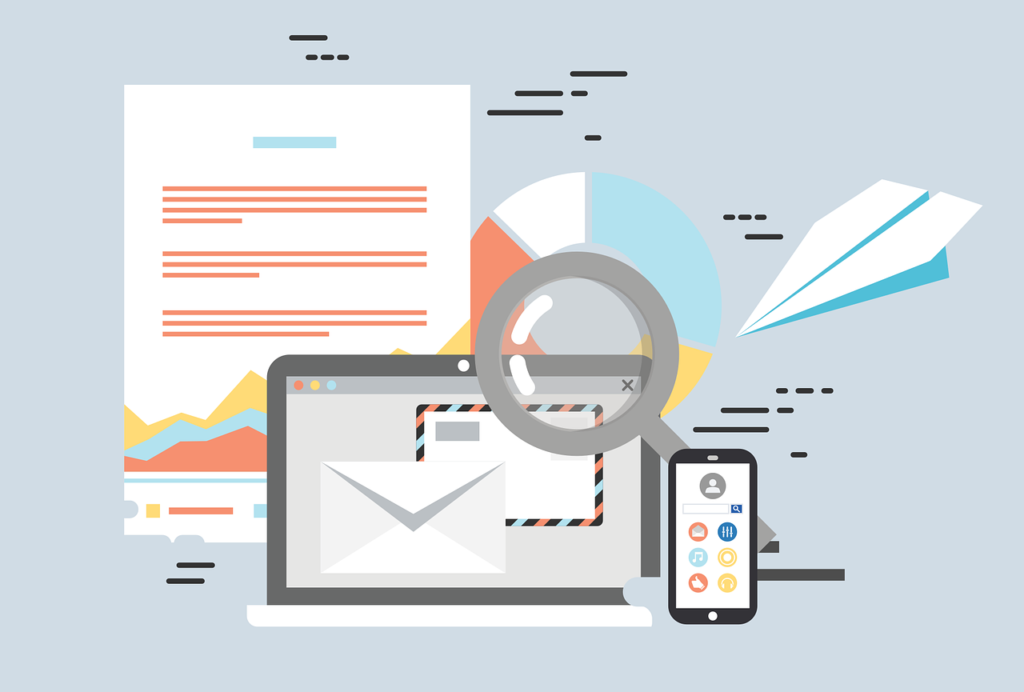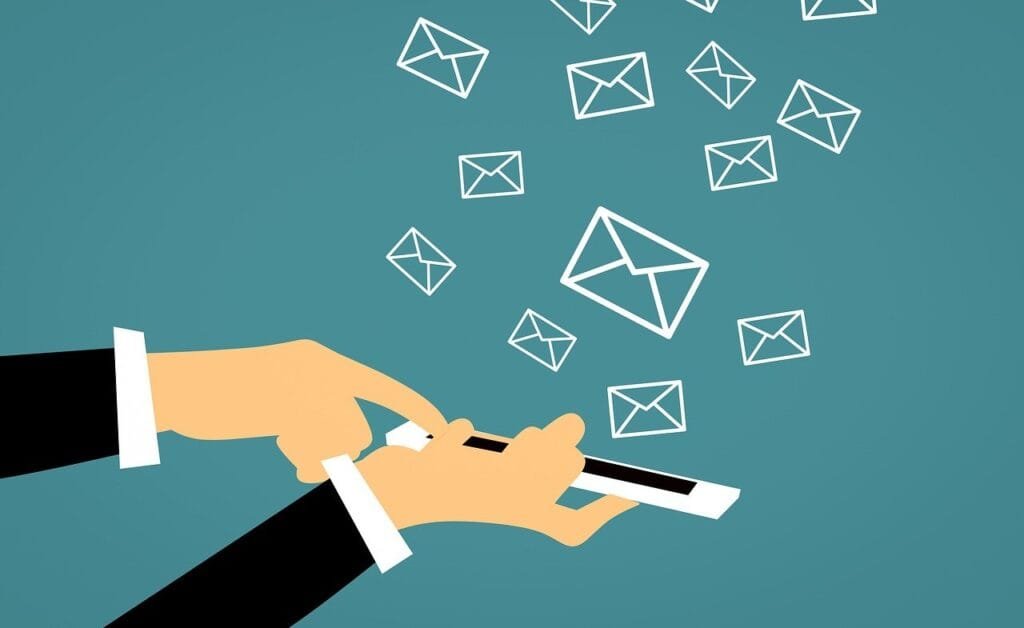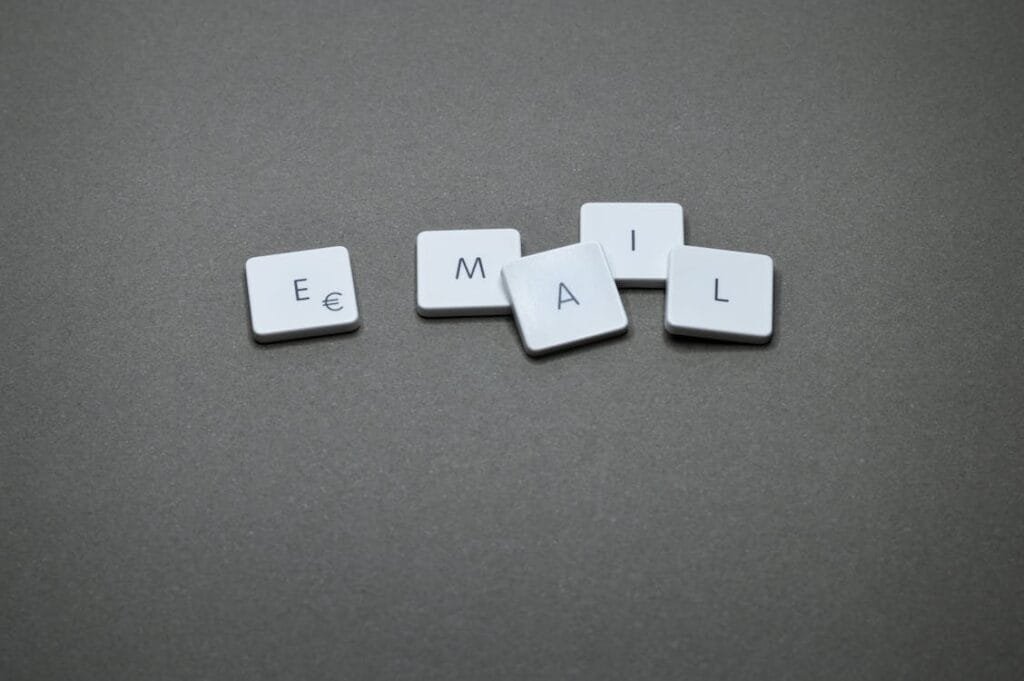This Article has been revised, edited and added to, by Poulomi Chakraborty.
- Understanding the Psychology of Email Opens
- Crafting Content That Drives Clicks
- Analyzing and Optimizing Email Performance
- The Role of Deliverability in Email Marketing Success
- Understanding Email Deliverability
- Factors Affecting Deliverability
- Building and Maintaining a Healthy Email List
- Authentication and Compliance
- Monitoring and Improving Deliverability
- Example: Improving Deliverability for a Marketing Campaign
- Real-World Application: Deliverability Best Practices
- Continuous Improvement
- The Art of Segmentation and Personalization
- Why Segmentation Matters
- Effective Segmentation Strategies
- Personalization for Enhanced Engagement
- Using Dynamic Content
- Example: Segmentation and Personalization in Action
- Real-World Application: Boosting Sales with Personalization
- Measuring the Impact of Segmentation and Personalization
- Continuous Refinement and Optimization
- Real-World Application: Continuous Improvement
- Conclusion
Email marketing remains a cornerstone of digital marketing strategies, delivering unmatched ROI when executed correctly. But what makes some emails get opened and clicked, while others are ignored or deleted? Understanding the science behind effective email marketing can transform your campaigns from average to exceptional. This article delves into the factors that drive opens and clicks, offering actionable insights to help you craft emails that engage your audience and achieve your marketing goals.
Understanding the Psychology of Email Opens

The Power of the Subject Line
The subject line is your email’s first impression, and it plays a pivotal role in whether your email gets opened. A compelling subject line grabs attention and piques curiosity, making the recipient want to know more.
Think of it as the headline of a news article – it must be intriguing enough to make people stop and click. For example, compare “Monthly Newsletter” with “Unlock 5 Exclusive Tips for a Healthier Lifestyle”. The latter is more likely to capture attention because it offers a clear benefit and creates curiosity.
Personalization and Relevance
Personalization goes beyond using the recipient’s name in the subject line. It involves tailoring the content to meet the specific interests and needs of your audience. Emails that feel personal and relevant are more likely to be opened.
This can be achieved through segmentation and targeted messaging. For instance, if you run an online bookstore, you might send different emails to fiction lovers and non-fiction enthusiasts, each highlighting new releases in their preferred genres.
Timing and Frequency
The timing of your email can significantly impact its open rates. Sending your email at a time when your audience is most likely to check their inbox increases the chances of it being seen and opened. This varies depending on your target audience and their habits.
For example, if your audience is primarily working professionals, early morning or late evening emails might perform better. Additionally, finding the right frequency is crucial.
Too many emails can lead to fatigue and unsubscribes, while too few can result in your audience forgetting about you. Regular testing and analysis can help you find the optimal timing and frequency for your campaigns.
Psychological Triggers in Subject Lines
Certain psychological triggers can make your subject lines more compelling. Curiosity, urgency, and exclusivity are powerful motivators. For example, subject lines that create a sense of urgency like “Last Chance to Save 50%” or spark curiosity like “You Won’t Believe What’s Inside” can drive higher open rates. However, it’s important to use these triggers judiciously to avoid coming across as spammy or manipulative.
Example of Effective Subject Lines
Consider a fitness app promoting a new workout program. A generic subject line like “New Workout Program Available” might not be very enticing. However, a subject line like “Transform Your Body in 30 Days – Start Today!” creates excitement and urgency, making it more likely to be opened. By focusing on the benefits and incorporating psychological triggers, you can significantly improve your email open rates.
Real-World Comparison: Generic vs. Personalized Subject Lines
Let’s compare the effectiveness of generic and personalized subject lines with a real-world example. A travel agency sending out a promotional email might use a generic subject line like “Check Out Our Latest Deals”.
Alternatively, a personalized subject line like “John, Discover Your Dream Vacation in Bali” is likely to perform better. The personalized approach not only grabs attention but also makes the recipient feel valued and understood, increasing the likelihood of the email being opened.
Understanding the psychology behind email opens is the first step to crafting effective email campaigns. By focusing on compelling subject lines, personalization, timing, and psychological triggers, you can increase your open rates and set the stage for higher engagement.
Crafting Content That Drives Clicks

Engaging Introductions
Once your email has been opened, the next challenge is to engage the reader with your content. A compelling introduction is crucial. It should be direct and immediately address the recipient’s needs or interests.
The opening lines should create a connection and make the reader want to continue reading. Consider starting with a question, a bold statement, or a relevant anecdote that resonates with your audience.
For example, an email from a wellness brand might start with, “Feeling stressed and overwhelmed? Discover how our new mindfulness app can bring peace to your daily routine.” This introduction addresses a common pain point and promises a solution, enticing the reader to keep reading.
Clear and Compelling Body Content
The body of your email should be clear, concise, and focused on a single message or goal. Avoid overwhelming your readers with too much information. Instead, break your content into short paragraphs and use subheadings to guide the reader through the email. Each section should build on the previous one, leading the reader towards the call-to-action (CTA).
For instance, if you’re promoting a webinar, your email could outline the key benefits of attending, provide a brief agenda, and include testimonials from past participants. Each of these elements helps to build interest and credibility, making the reader more likely to click on the registration link.
Visual Elements and Design
Visual elements play a significant role in email engagement. High-quality images, graphics, and a clean layout can make your email more appealing and easier to read. Use visuals to highlight important information and break up text. Ensure that your design is responsive so that your emails look great on both desktop and mobile devices.
A travel agency, for example, might use stunning destination photos to capture the reader’s imagination. These images can evoke emotions and desires, making the recipient more inclined to click on the links to learn more about the travel packages.
Strong and Strategic CTAs
The call-to-action (CTA) is one of the most critical components of your email. It should be clear, compelling, and strategically placed within your content. The CTA tells the reader what action to take next, whether it’s to shop now, sign up, download a resource, or contact your team.
Effective CTAs use action-oriented language and create a sense of urgency or importance. For example, instead of a generic “Click Here,” a more compelling CTA might be “Get Your Free Trial Today” or “Secure Your Spot Now.” Additionally, using buttons rather than text links can make your CTAs more noticeable and easier to interact with, especially on mobile devices.
Personalization and Dynamic Content
Personalization extends beyond the subject line and into the body of the email. Use dynamic content to tailor the message to individual recipients. This could include personalized product recommendations based on past purchases, content relevant to their interests, or localized information based on their location.
For example, an online bookstore might send personalized emails recommending new releases in genres the recipient has previously purchased. By making the content feel more relevant and personalized, you increase the likelihood of the recipient clicking through to explore the recommendations.
Example of Effective Email Content
Consider an e-commerce business promoting a seasonal sale. The email could start with a compelling introduction like, “Ready to refresh your wardrobe? Our Spring Sale is here with up to 50% off!” The body content could highlight key items on sale, showcase customer reviews, and use high-quality images of the products. The email could include a clear CTA like “Shop the Spring Sale Now” with a prominent button.
Real-World Application: Content that Converts
To illustrate the impact of well-crafted content, let’s look at a nonprofit organization seeking donations. An effective email might start with a powerful story about someone who has benefited from the organization’s work.
This emotional hook draws the reader in. The body of the email could provide more details about the organization’s impact, using statistics and testimonials. The CTA could be a button saying, “Donate Now to Change Lives.”
By combining an engaging introduction, compelling body content, strategic CTAs, and personalization, the nonprofit can create an email that resonates with recipients and drives them to take action.
Testing and Refining Content
Continuous testing and refinement are key to optimizing your email content. Experiment with different content formats, messaging styles, and CTAs to see what resonates best with your audience. A/B testing allows you to compare variations and determine which elements drive higher engagement and clicks. Analyze your results and use the insights to improve future campaigns.
For example, test different headlines, imagery, and CTA placements to see which combinations result in the highest click-through rates. Use data-driven decisions to refine your approach and ensure your emails consistently deliver value and drive action.
Creating content that drives clicks involves understanding your audience, crafting engaging and relevant messages, and strategically guiding them towards your desired action. By focusing on these elements and continuously optimizing your content, you can increase engagement and achieve your email marketing goals.
Analyzing and Optimizing Email Performance

Importance of Analytics in Email Marketing
To maximize the effectiveness of your email marketing campaigns, it’s crucial to analyze performance data and use those insights to optimize your strategy. Email analytics provide a wealth of information about how your emails are performing, including open rates, click-through rates, conversion rates, and more. By understanding these metrics, you can identify what’s working, what’s not, and how to improve future campaigns.
Key Metrics to Monitor
There are several key metrics that you should regularly monitor to gauge the success of your email campaigns. Each metric offers unique insights into different aspects of your emails:
- Open Rate: This metric indicates the percentage of recipients who opened your email. A high open rate suggests that your subject lines are compelling and that your audience is interested in your content. If your open rates are low, consider testing different subject lines and send times.
- Click-Through Rate (CTR): The CTR measures the percentage of recipients who clicked on one or more links within your email. A high CTR indicates that your content and CTAs are engaging and effective. To improve CTR, ensure your links are prominent and your CTAs are clear and compelling.
- Conversion Rate: This metric shows the percentage of recipients who completed a desired action after clicking a link in your email, such as making a purchase or filling out a form. A high conversion rate signifies that your emails are not only engaging but also effective in driving the desired actions. Analyze the path from click to conversion to identify any potential drop-off points.
- Bounce Rate: The bounce rate indicates the percentage of emails that were not delivered to recipients’ inboxes. High bounce rates can harm your sender reputation. Monitor this metric to identify and remove invalid email addresses from your list.
- Unsubscribe Rate: This metric shows the percentage of recipients who unsubscribed after receiving your email. While some unsubscribes are inevitable, a high unsubscribe rate may indicate that your content is not meeting audience expectations. Use this insight to refine your content and segmentation strategies.
A/B Testing for Continuous Improvement
A/B testing, also known as split testing, is a powerful technique for optimizing your email campaigns. It involves sending two variations of an email to small segments of your audience to see which version performs better. By comparing metrics such as open rates, CTRs, and conversion rates, you can identify the most effective elements of your emails.
For instance, you might test different subject lines, email designs, content layouts, or CTAs. Suppose you’re unsure whether a “50% Off” or “Buy One Get One Free” offer will resonate more with your audience. By A/B testing these two offers, you can determine which one drives higher engagement and conversions. Use the winning version for the rest of your audience to maximize your results.
Segmenting for Deeper Insights
Segmenting your email list allows you to tailor your messages to different groups within your audience, leading to more relevant and engaging emails. By analyzing the performance of segmented campaigns, you can gain deeper insights into what resonates with different segments.
For example, a clothing retailer might segment their list based on gender, purchase history, or geographic location. By sending targeted emails to each segment, the retailer can compare the performance of different content and offers, refining their strategy to better meet the needs of each group.
Leveraging Advanced Analytics Tools
Advanced analytics tools can provide more in-depth insights into your email performance. Many email marketing platforms offer built-in analytics, but you can also use third-party tools for more comprehensive analysis. Tools like Google Analytics can help you track the behavior of recipients after they click through to your website, providing insights into how your emails drive traffic and conversions.
For example, use Google Analytics to track the journey of recipients who clicked on a link in your email. Analyze which pages they visited, how long they stayed, and whether they completed any desired actions. This data can help you understand the effectiveness of your email content and CTAs in driving website engagement and conversions.
Example: Data-Driven Optimization
Consider an e-commerce business that sends out a weekly newsletter. By analyzing their email performance data, they notice that emails sent on Tuesday mornings have higher open rates than those sent on other days.
Additionally, emails with product recommendations based on past purchases have higher CTRs and conversion rates. Using these insights, the business decides to schedule their newsletters for Tuesday mornings and focus on personalized product recommendations. They also implement A/B testing for different subject lines and CTAs to continuously refine their approach.
Real-World Application: Improving Email Campaigns with Data
To illustrate the impact of data-driven optimization, consider a nonprofit organization that relies on email campaigns for fundraising. By analyzing their email performance data, they discover that emails with compelling stories and strong emotional appeals have higher engagement and donation rates. They also find that including a clear and urgent CTA, such as “Donate Now to Make a Difference,” significantly boosts conversions.
Based on these insights, the nonprofit refines their email content to focus more on storytelling and emotional appeals. They also experiment with different CTAs and subject lines to further optimize their campaigns. As a result, they see a substantial increase in engagement and donations, demonstrating the power of data-driven optimization.
Continuous Learning and Adaptation
Email marketing is an ongoing process of learning and adaptation. Stay informed about industry trends, best practices, and emerging technologies to keep your email campaigns fresh and effective.
Regularly review your performance data, conduct A/B tests, and refine your strategies based on the insights you gain. By continuously optimizing your email marketing efforts, you can achieve better results and drive long-term success for your brand.
Analyzing and optimizing email performance is essential for maximizing the effectiveness of your campaigns. By monitoring key metrics, leveraging A/B testing, segmenting your audience, and using advanced analytics tools, you can gain valuable insights and continuously improve your email marketing strategy. This data-driven approach ensures that your emails are engaging, relevant, and effective in driving the desired actions.

The Role of Deliverability in Email Marketing Success
Understanding Email Deliverability
Email deliverability is a crucial aspect of email marketing that determines whether your emails reach your subscribers’ inboxes. High deliverability ensures that your carefully crafted messages are seen by your audience, while poor deliverability can result in your emails landing in spam folders or being blocked altogether. Understanding the factors that affect deliverability is essential for maintaining a strong email marketing strategy.
Factors Affecting Deliverability
Several factors influence email deliverability, including your sender reputation, email content, and subscriber engagement. Your sender reputation is a score assigned by Internet Service Providers (ISPs) based on the quality of your email campaigns.
High engagement rates, low bounce rates, and minimal spam complaints contribute to a positive sender reputation, while high bounce rates and frequent spam complaints can harm it.
The content of your emails also plays a significant role. ISPs use content filters to identify spammy or malicious emails. Avoid using overly promotional language, excessive punctuation, and all caps, as these can trigger spam filters.
Additionally, including a clear and easy-to-find unsubscribe link in your emails is not only a legal requirement but also helps maintain a clean email list by allowing uninterested recipients to opt out.
Subscriber engagement is another critical factor. ISPs track how recipients interact with your emails, including open rates, click-through rates, and replies. High engagement signals to ISPs that your emails are relevant and valuable, improving your deliverability.
Building and Maintaining a Healthy Email List
A healthy email list is essential for good deliverability. Focus on quality over quantity by ensuring that your subscribers are genuinely interested in your content. Use double opt-in forms to confirm that new subscribers want to receive your emails. This practice involves sending a confirmation email to new subscribers, asking them to verify their subscription.
Regularly clean your email list by removing inactive or invalid email addresses. Use engagement metrics to identify subscribers who haven’t interacted with your emails in a while and attempt to re-engage them with targeted campaigns. If they remain inactive, it’s best to remove them from your list to maintain high engagement rates and a positive sender reputation.
Authentication and Compliance
Email authentication protocols, such as SPF (Sender Policy Framework), DKIM (DomainKeys Identified Mail), and DMARC (Domain-based Message Authentication, Reporting & Conformance), help verify that your emails are coming from a legitimate source. Implementing these protocols improves your deliverability by reducing the likelihood of your emails being marked as spam.
Compliance with email marketing regulations, such as GDPR (General Data Protection Regulation) in Europe and CAN-SPAM (Controlling the Assault of Non-Solicited Pornography And Marketing) in the United States, is also essential. These regulations require you to obtain explicit consent from subscribers, provide a clear unsubscribe option, and include your physical mailing address in your emails. Non-compliance can result in legal penalties and damage your sender reputation.
Monitoring and Improving Deliverability
Regularly monitor your email deliverability using analytics tools provided by your email marketing platform. Look for metrics such as bounce rates, spam complaints, and inbox placement rates. Analyzing these metrics can help you identify potential issues and take corrective action.
For example, if you notice a high bounce rate, check for typos or outdated email addresses in your list. If you receive frequent spam complaints, review your content and ensure it aligns with your subscribers’ expectations. Tools like Return Path and Litmus can provide deeper insights into your deliverability and help you optimize your email campaigns.
Example: Improving Deliverability for a Marketing Campaign
Consider a SaaS company that experienced a decline in email engagement. By analyzing their deliverability metrics, they discovered that a significant portion of their emails were landing in spam folders. To address this issue, they implemented authentication protocols, cleaned their email list, and refined their content to avoid spam triggers. They also focused on re-engaging inactive subscribers with targeted campaigns. As a result, their deliverability rates improved, leading to higher open rates and increased engagement.
Real-World Application: Deliverability Best Practices
A retail brand aiming to maximize the impact of their holiday email campaign can prioritize deliverability by following best practices. They start by segmenting their email list to ensure that recipients receive relevant content. They implement SPF, DKIM, and DMARC protocols to authenticate their emails and reduce the risk of being marked as spam. To maintain engagement, they send personalized offers based on past purchase behavior and ensure their emails are mobile-friendly.
By monitoring their deliverability metrics and making data-driven adjustments, the retail brand can improve their email performance and drive more sales during the critical holiday season.
Continuous Improvement
Deliverability is not a one-time task but an ongoing process. Continuously monitor your metrics, update your list, and refine your content to maintain high deliverability rates. Stay informed about changes in email marketing regulations and best practices to ensure compliance and effectiveness.
Engage with your subscribers regularly to keep your email list active and responsive. Solicit feedback and encourage interaction to build stronger relationships and demonstrate the value of your emails. By focusing on deliverability, you can ensure that your messages reach your audience and drive meaningful engagement.
Maintaining high email deliverability is essential for the success of your email marketing campaigns. By understanding the factors that affect deliverability, building a healthy email list, implementing authentication protocols, and continuously monitoring and optimizing your performance, you can ensure that your emails reach your audience and achieve your marketing goals.
The Art of Segmentation and Personalization

Why Segmentation Matters
Segmentation is the process of dividing your email list into smaller, more targeted groups based on specific criteria. This allows you to send more relevant and personalized emails to each segment, improving engagement and conversion rates. Segmentation is a powerful tool because it recognizes that your audience is not a monolith; different segments have different needs, preferences, and behaviors.
By tailoring your messages to each segment, you can provide more value to your subscribers and foster stronger relationships. For example, a clothing retailer might segment their list by gender, purchase history, and geographic location. This enables them to send targeted promotions that are more likely to resonate with each group.
Effective Segmentation Strategies
There are various ways to segment your email list, and the best approach depends on your business and audience. Some common segmentation criteria include:
- Demographics: Segmenting based on age, gender, income level, job title, etc.
- Behavioral Data: Segmenting based on past purchase history, website activity, email engagement, and other behaviors.
- Geographic Location: Segmenting based on where your subscribers live, which is especially useful for location-based promotions.
- Psychographics: Segmenting based on interests, values, and lifestyle choices.
- Engagement Levels: Segmenting based on how engaged subscribers are with your emails, such as frequent openers vs. those who rarely open your emails.
For example, an online fitness platform could segment its list into groups like “new subscribers,” “regular users,” and “inactive users.” They could then create specific campaigns for each group: onboarding emails for new subscribers, special promotions for regular users, and re-engagement campaigns for inactive users.
Personalization for Enhanced Engagement
Personalization goes hand-in-hand with segmentation. It involves using the data you have about your subscribers to make your emails more relevant and engaging. Personalized emails can include the recipient’s name, recommendations based on past purchases, and content tailored to their interests.
For instance, an e-commerce site could send personalized product recommendations to customers based on their browsing history and past purchases. This not only makes the email more relevant but also increases the chances of the recipient making a purchase.
Using Dynamic Content
Dynamic content allows you to create a single email template that displays different content to different segments of your audience. This is particularly useful for large lists with diverse subscribers. For example, an online bookstore could use dynamic content to show different book recommendations based on the recipient’s favorite genres.
With dynamic content, you can create more personalized and relevant emails without the need to design multiple campaigns. This saves time and resources while still delivering targeted messages to your audience.
Example: Segmentation and Personalization in Action
Consider an online travel agency that wants to promote different vacation packages. They segment their email list into groups such as “adventure travelers,” “family vacationers,” and “luxury travelers.” Each segment receives an email tailored to their preferences. Adventure travelers get emails highlighting exciting outdoor activities, family vacationers receive emails about kid-friendly destinations, and luxury travelers see emails featuring high-end resorts and exclusive experiences.
By using segmentation and personalization, the travel agency can ensure that each email resonates with its intended audience, driving higher engagement and bookings.
Real-World Application: Boosting Sales with Personalization

A home goods retailer can use segmentation and personalization to increase sales during a holiday promotion. They segment their list based on purchase history and interests, sending personalized gift guides to each group. For example, subscribers who previously bought kitchen appliances receive a guide featuring the latest kitchen gadgets, while those who purchased home decor items get a guide with trendy decor ideas.
Each email includes personalized product recommendations and exclusive discounts, making the content more relevant and enticing. The retailer also uses dynamic content to showcase different products and offers based on the recipient’s browsing history. This targeted approach helps boost engagement and drive more sales during the critical holiday season.
Measuring the Impact of Segmentation and Personalization
To evaluate the effectiveness of your segmentation and personalization efforts, track key metrics such as open rates, click-through rates, and conversion rates for each segment. Compare these metrics to those of your broader email campaigns to see how well your targeted messages are performing.
For example, if you notice that segmented campaigns have higher open and click-through rates compared to non-segmented campaigns, this indicates that your audience finds the targeted content more relevant and engaging. Use these insights to refine your segmentation strategies and improve future campaigns.
Continuous Refinement and Optimization
Segmentation and personalization are not one-time tasks but ongoing processes. Continuously gather data on your subscribers’ behavior and preferences, and use this information to update and refine your segments. Regularly review the performance of your segmented campaigns and make adjustments based on what you learn.
Experiment with different segmentation criteria and personalization techniques to see what works best for your audience. For instance, try segmenting by purchase frequency or engagement level, and test different types of personalized content to find the most effective approach.
Real-World Application: Continuous Improvement
A SaaS company offering project management software can continuously refine their segmentation and personalization strategies. They segment their list into groups such as “new users,” “frequent users,” and “trial users.” Each group receives tailored emails with content relevant to their usage stage, such as onboarding guides for new users, advanced tips for frequent users, and conversion offers for trial users.
The company regularly analyzes the performance of these segmented campaigns, using insights to improve their strategies. They test different subject lines, content formats, and CTAs to optimize engagement and conversions. By continuously refining their approach, they can provide more value to their subscribers and achieve better results.
Segmentation and personalization are powerful tools for enhancing email marketing effectiveness. By understanding your audience, tailoring your messages, and continuously optimizing your strategies, you can create more relevant and engaging emails that drive higher engagement and conversions.
Conclusion
Effective email marketing is both an art and a science, requiring a deep understanding of your audience, compelling content, and strategic execution. By focusing on personalization, segmentation, and timing, you can craft emails that resonate with your audience and drive meaningful engagement. Leveraging analytics and continuously optimizing your approach ensures that your campaigns remain effective and relevant.
The key to success lies in combining creative elements with data-driven insights. Personalized subject lines, engaging content, and clear calls-to-action are essential components that can significantly impact open and click-through rates. Understanding the importance of deliverability and implementing best practices will ensure your emails reach your audience’s inbox.
Ultimately, effective email marketing is about building relationships and providing value to your subscribers. By consistently delivering relevant and engaging content, you can foster trust and loyalty, positioning your brand for long-term success. Stay informed, test your strategies, and adapt to your audience’s needs to achieve the best results.
Read next





















